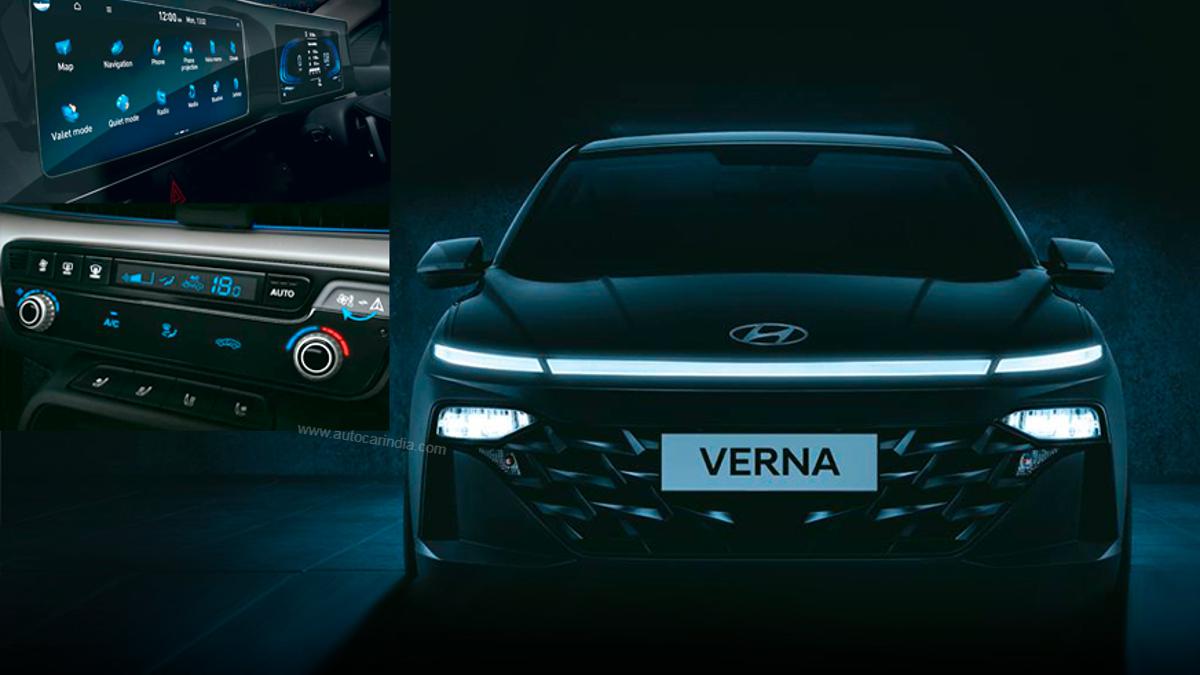Ahead of its global debut on March 21, Hyundai has revealed a few more features of the next-gen Verna. This mid-size sedan is expected to go on sale later this month with deliveries commencing from mid-April.
The new Verna will sport an integrated, dual-screen set-up, similar to the one seen on the Ioniq 5, with two 10.25-inch screens — one for the infotainment system and the other for the digital instrument cluster — while the outgoing Verna features an 8-inch touchscreen. The next-gen Verna will also get an 8-speaker system tuned by Bose and replace the Arkamys sound module.
Furthermore, the new Verna also gets segment-first features such as a switchable unit for controlling the infotainment system and HVAC, and heated seats. In the former, a touch panel houses both controls, which changes its interface and controls. The upcoming Verna will continue to get ventilated front seats.
Earlier this month, Hyundai teased some more features of the new Verna such as a unique phone holder for the front passenger, multi-purpose console and a cooled glove box. It will also get a dual tone black and beige interior, with higher variants expected to get a leatherette interior.
The new Hyundai Verna will measure 4,535mm in length, 1,765mm in width and 1,475mm in height, making it longer and wider than the outgoing model, although its height remains the same. It will also have a 528-litre boot, which is 50 litres more than its predecessor.
Hyundai will offer two 1.5-litre petrol engines with the new Verna — a 115hp naturally aspirated (NA) unit and a 160hp turbocharged unit. The former will be available with lower variants, while the latter will be reserved for higher variants. While both engines will be paired with a 6-speed manual gearbox as standard, the NA unit will get a CVT and the turbo-petrol will get a DCT as an option.
The next-gen Verna will be offered in four trims — EX, S, SX and SX (O) and is expected to be priced roughly ₹60,000 to ₹1 lakh more than the current model, depending on the variant.





